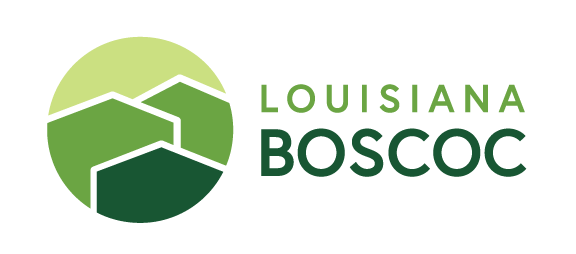Overview
Purpose
The LA BOSCOC is seeking public feedback on its draft New Project Scoring Tool and Renewal Project Scoring Tool for the upcoming Funding Year 2020 (FY 2020) Continuum of Care (CoC) Program Local Competition.
The FY 2020 CoC Program Local Competition will be used to select and rank new and renewal projects to submit to the FY 2020 CoC Program Notice of Funding Availability (NOFA).
Note that these drafts are based on the LA BOSCOC’s best projections about the FY 2020 CoC Program NOFA and will not be finalized until the NOFA is released. These drafts will be adjusted as needed to ensure projects are scored in concert with the NOFA and competitive at the national level.
CoC Program Funding
The CoC Program is the single largest competitive grant in the federal government. Last year, it funded more than $2.2 billion nationwide into projects dedicated to preventing and ending homelessness.
The LA BOSCOC anticipates being eligible to apply for more than $20 million in FY 2020, including approximately $1.5 million in new funding.
For new projects, the CoC Program will primarily fund housing and supportive services for people experiencing literal homelessness or fleeing domestic violence. The CoC Program does not fund emergency shelter.
Changelog
Overview
The following is a condensed list of the most significant changes from last year (FY 2019). It is not intended to be a full list of changes. CoC staff encourage you to read the Tool(s) in their entirety as appropriate.
Changes to Both Tools
“Evidence-based approach” language removed from the Definitions section and from all questions; in questions where a data-driven approach is appropriate, more specific data questions have been added, while in others, specific requests for data have been removed entirely
The New Project Supplement and Renewal Project Supplement have been removed; applicants will no longer be required to submit anything other than their project applications to the LA BOSCOC
Added a threshold criterion, “Equal Access,” which explicitly states that all projects must comply with HUD’s Equal Access in Accordance with Gender Identity Final Rule (2012) and Equal Access to Housing Final Rule (2012); while some of this was previously included in the “Eligible Populations” threshold criterion, the “Equal Access” criterion is both more comprehensive and more clearly signals the CoC’s commitment to serving all people according to their gender, regardless of their gender, and without separating families
Clarified that domestic violence service providers are required to use an HMIS-comparable database, not “projects that serve people fleeing domestic violence”
The “Low Barrier” threshold criterion has been replaced by the “Housing First” threshold criterion; this reflects (1) the CoC’s commitment to the Housing First model and (2) the LA BOSCOC’s expectation that the low barrier model from the FY 2019 CoC Program NOFA will be reverted to the Housing First model from the FY 2018 CoC Program NOFA
Projects no longer receive points for targeting specific subpopulations (i.e. youth, veterans, people experiencing chronic homelessness); by placing general population projects on an equal footing with target population projects, the LA BOSCOC hopes to generate more umbrella projects that can react to evolving needs within its geography
Questions about monitoring now include LA BOSCOC findings as well as HUD and OIG Audit findings
Bonus points are now awarded for organizations that send at least one staff member to attend at least one CoC-sponsored training in the last year; the CoC expects to make a free, CoC-sponsored case management training available in May 2020
Bonus points for “Staff Sustainability” have been removed due to liability concerns
New Project Scoring Tool Changes
Under “Community Need,” projects are no longer asked to project their outcomes (projects share and are assessed by HUD on common outcomes including exits to permanent housing, increases in income, etc.)
Multiple narratives now more clearly stress that projects must have a clear, well-developed plan to increase participant income
“Outreach” has been removed, as asking projects to project their participant in their Region’s outreach network during the project application phase is beyond what many applicants could reasonably project
“Homeless Services Experience” has been rewritten to put first-time applicants on more even footing with existing recipients
“Point in Time Count” and “Housing Inventory Chart” have been removed to put first-time applicants on more even footing with existing recipients
Full points for hiring an outreach worker now requires 1.0 FTE (up from 0.5 FTE)
Renewal Project Scoring Tool Changes
Scoring thresholds for “Percentage of Participants Exiting to or Maintaining Permanent Housing” and “Percentage of Participants Exiting to Shelter/Streets/Unknown” have been raised due to renewal projects almost universally clearing the scoring thresholds in FY 2019
Project type-specific criteria that were forecasted in FY 2019 will be included in FY 2020
“APR Timeliness” simplified
“Funding Request Timeliness” removed
“Monitoring Results” is now worth 6 points (up from 2) and has two scoring thresholds (up from one)
Accessing the documents
Click here to download the New Project Scoring Tool.
Click here to download the Renewal Project Scoring Tool.
How to provide public comment
Please submit public comments by email to Gordon Levine, Continuum of Care Manager, at glevine@lhc.la.gov.
Public comments will be accepted through 4 PM on March 6, 2020.
